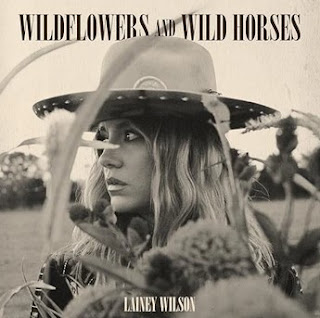Whether is was Hernán Cortez at the beginning of the 16th century or Christopher Columbus on his second voyage at the end of the 15th century with whom the horse landed back on the American continent remains to be unresolved for the time being. But what is certain, however, is that it quickly became an essential part of the nomadic indigenous peoples of North America. It made them, as horse-riding peoples, successful buffalo hunters and feared warriors. Even Major Marcus Reno of the US Cacalry described the Sioux and Cheyenne after the famous battle of the Little Big Horn in 1976 as the best [light] cavalry in the world.
But with the almost total extinction of the buffalo, the equestrian peoples also disappeared from the vast plains of North America. Forced into reservations, they also lost the horse as a central part of their culture. Instead the mustangs, descendants of the European horse, began zu spread unhindered on the North American prairies. With no natural enemies, the rapid growth of their herds meant that their numbers even had to be curbed in the first half of the 20th century. Eventually, in 1971, the American Congress made the wild horses a protected species via the Burros Act.
By that time, however, the horse had long been inextricably linked with another symbolic figure of the American West: the profession of the cattle herder, or, more commonly known, as the cowboy. It was not least the cinema that stylized him as a great hero at the beginning of the 20th century. And at the end of the silent movie era in 1927, the western film even initiated its own sub-genre dubbed the Singing Cowboy.
In it the cowboy was singing about the perils and the hard life of a cattle herder. After John Wayne (Riders of Destiny, 1933) tried it with little success, actor-singers like Roy Rogers, Tex Ritter and Gene Autry became big crowd favorites well into the 1950s. The roots of the music with which they described the life of the cowboys, who were primarily at home in the western states with their vast plains, can be traced back to European folk songs from Great Britain.
This Western Music was something of an equivalent to the derogatorily called Hillbilly Music of the southeast of the United States. Both of them were popular among the rural population. As the term Hillbilly Music was increasingly replaced by the more acceptable Country Music, Billboard Magazine published the first Country and Western chart in 1949. And in doing so, basically created a new genre that actually consisted out of two different musical styles that simply appealed to a similar audience-demographic.
In 1962 this Billboard chart was renamed to Hot Country Songs, a name that still exists today. And looking at the issue of January 8, 2024 of that very Billboard Hot Country Songs chart, we may find a song titled 'Wildflowers and Wild Horses' by Lainey Wilson at number 26. It is the third and new single from her award-winning second album for BBR Music, "Bell Bottom Country", and has already reached the Top-20 on the radio (Billboard Country Airplay) chart. All this does not really come unexpected, except that the release of this very different-sounding mid-tempo song as an official single came as a bit of a surprise to some.
"This one definitely shows that western side, it takes me back to my childhood, my roots," says the 31-year-old artist, who first sat on a horse at the age of 9, as she told American Songwriter.
Written together with Paul Sikes and Trannie Anderson, the song deals with independence and self-reliance, but also about not letting difficulties get you down.
and one fifth of jack.
I push like a daisy through old sidewalk cracks,
yeah, my kinda crazy's still running its courses,
with wildflowers and wild horses.
Back in August of 2023, the Western theme had already brought Lainey Wilson a multi-year contract with the company that stands for Western in the fashion sector like no other, namely Wrangler. "I have been devoted to the western lifestyle all my life, and there’s nothing that feels more like home than a pair of Wrangler jeans," the artist told Billboard Magazine.
Therefore it comes as no surprise that she also made a musical appearance at the Wranger - sponsored National Finals Rodeo (NFR) in Las Vegas, the season finale of the year's best rodeo riders. A performance where she not only presented 'Wildflowers and Wild Horses' with an impressive acoustic version, but also proved that she indeed knows how to ride a horse herself.
'Wildflowers and Wild Horses' is the 14th track on Lainey Wilson's latest album and begins with a 30-second intro of mystical banjo and guitar picking. This perfectly fit with the dramatic, fiery presentation of the song, that Lainey Wilson did for the 57th annual Country Music Association (CMA) Awards on November 9, 2023. Only for the official radio single the intro seemed inappropriate and was therefore removed.
Nevertheless, the song remains sounding different from anything one gets to hear on the charts at the moment. That's why many don't give the song much chance of climbing to the very top. But at the same time, that's what makes it stick out and have one take notice, while it is becoming more catchy with every listen. Not least because of the emotionality that Lainey Wilson brings to the song. It's hard to not see her identification with the song. Especially when she says in an interview with countrynow.com: "I come from a long line of hardheaded tough farmers in northeast Louisiana, people who have kind of [always] blazed their own trails."

Comments
Post a Comment